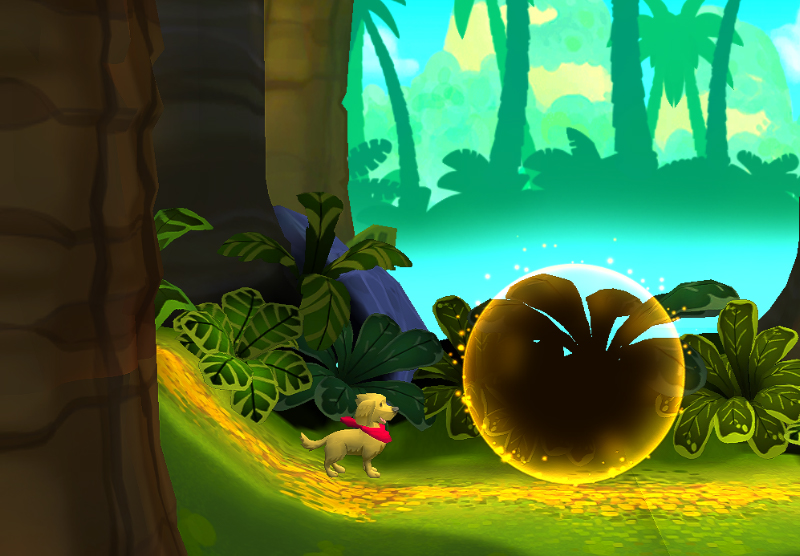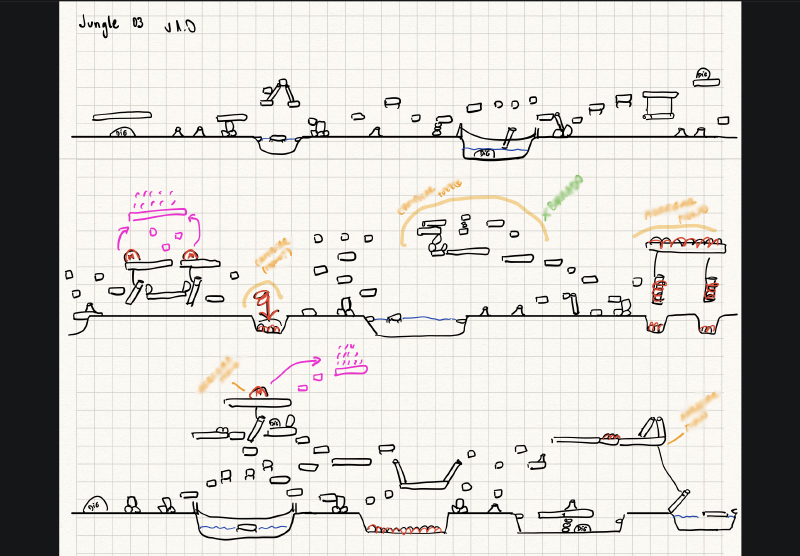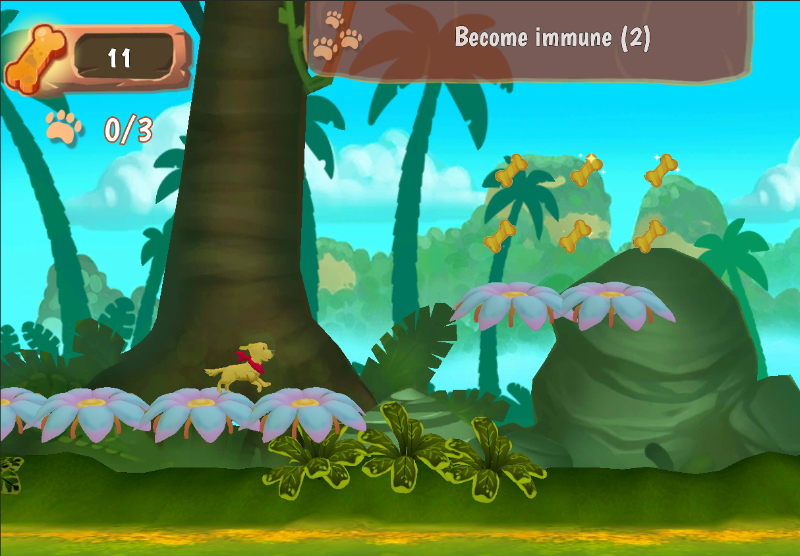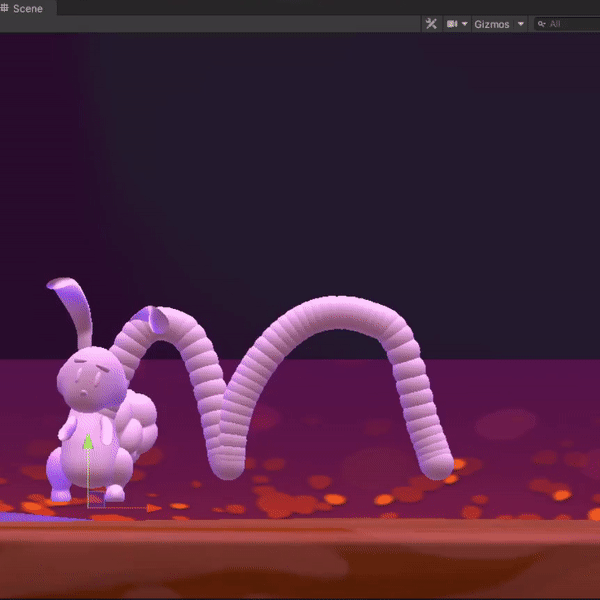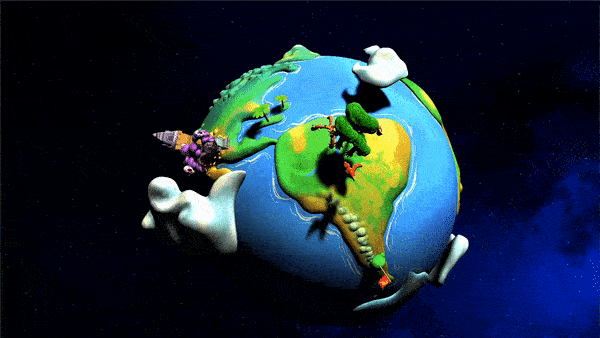Hub & New Navigation
Mission: Design (for real this time) entertaining levels with a focus on exploration
One of the main new ideas was to separate the game navigation into different sections that would be gradually accessible from a hub level.
Strategy:
To separate each section from the other I used the visual elements that identified them, creating the following for Brazil:
- Jungle Section
- Water Section
- Tree Tops Section
And for Mexico:
- Cemetery Entrance Section
- Underground Caves Section
- Heights Section
Adopting a theme helped me define the enemies, puzzles, obstacles and visual elements to include as it added a constraint that ensured the options were limited but still varied.
Designing the Levels (yet again...)
Mission: Design (for real this time) entertaining levels with a focus on exploration
With a fresh outlook of things and more level design study in the pocket, it is time to face again the challenge of creating interesting levels.
Strategy:
First step was to define new references and study them:
- Rayman Adventures
- Super Mario 3D World
Something that caught my eye when looking at these awesome games was the feeling of "being busy" that the level transmits.
There are so many different collectibles and little puzzles to solve, that it's never slacking time for these games' characters.
I definitely wanted to deliver the same feeling as well as the accomplishment of finishing these kinds
of levels so full of different experiences.
An important change was the focus on exploration over platforming. Accepting we were not generating
the next Mario Bros. was a weight lifted and helped
me focus on making entertaining levels without so much focus on the player's skill.
Dead Ends
While designing the endless runner levels for the mobile version, I studied many endless
runners and the reason why they keep being challenging after playing for a long time.
One of the things I noticed was the use of dead ends. Following the golden rule of "Walking
is not gameplay" I realized that obstructing the player's
road with some dead ends that are not necessarily enemies or harmful elements is a way of
avoiding a boring navigation.
I also took many ideas from the book Level Up by Scott Rogers,
especially regarding rhythm and branching. With that in mind, I made sure that every time
I drew a level, there were enough branches in each subsection of it for it to be interesting
to explore.
Of course, each branch had to have some kind of reward at the end because exploration for the pure sake
of it can be frustrating for the player.
My Process:
MIND MAP IPAD DRAWING UNITY BASE LEVEL
PLAYTEST & POLISH DECORATION & LIGHTING
Mechanics & Difficulty Progression

Mission: Generate a progression system that considers all the level elements as well as the mechanics availability.
Difficulty must consider all the elements in each level. The constraints approach helps a lot to decide which elements to put where and forces me to
expand on each one to generate more interesting and varied interactions.
Strategy:
The strategy was similar for difficulty and mechanics.
Difficulty Progression
I generated mind maps to organize the different sections for each country, define which
enemies and obstacles would appear and how their individual difficulties would escalate through the progression of the section.
Puzzles and "normal" navigation elements were also included, as it was important to know if the section used moving platforms or moving boats
to help the player advance through the level.
Mechanics:
Using the same guidelines based on the sections restrictions, I also defined which skills would appear when and how would they be significantly useful
to face the challenges or simply navigate the level.
I based my thought process on the basics that were defined for the first prototype in Stage 1 of development.
Applying expert's suggestions, I also increased the ways in which each skill would help the character interact with enemies and the scenario.
Finally, I designed a road map for the skills to be discovered in each new country and made sure the mechanics made extensive use of them in their respective sections.
Other new skills and mechanics added:
- Stealth
- Wind based puzzles
- Stamina (used for barking and "swimming")
Re-organized collectibles and added some new ones to make the navigation more interesting.
Ensured mechanics would support and showcase the story beats in each country.
Constraints Driven Process

As a conclusion, I could define the new design process that emerged from all the re-thinking as a Constraints Driven Design Process.
When designing levels I often felt overwhelmed not only by my lack of experience in the field and the anxiety of having to create something
incredibly compelling but also by the fact that I had many, many different elements to fit in each level and that felt like a very difficult thing
to balance and organize.
Dividing each country into sections with specific visual elements and a very restricted list of enemies, obstacles, puzzles and navigation assets
ended up being the solution for my designing block and the overwhelming feeling that restrained me.
The main reason for this was the constraints. When inexperienced, it might be helpful to restrict your options a little more in order to
help you make the hardest decisions.
Transitioning from One Game to Two

Mission: Define the key features to include in each game
The initial prototype strayed away from many key points that were part of the original idea for Jumpy Paws.
While some of the things were on point, most of them felt like a different game was being made. It also felt like the product
didn't directly align with Raincup Games' main goals for the future.
Considering these elements, I decided to separate the games preserving a mobile version but also satisfying my initial idea
with a Premium PC version more focused on telling a story and exploring different places.
Strategy:
This strategy considered the following main points:
- Story was something we greatly regretted neglecting when we looked back at the initial prototype.
- As we studied the mobile market and the monetization strategies used, we were every day more convinced of not diving too much deeper into it.
- Creating a PC version story and exploration focused became a very attractive idea.
- Mobile version needed virtually infinite content. F2P games and even subscription based games rely on their content to keep players invested.
- Being a small team that didn't have plans for maintaining this game for a long period of time, it seemed very apparent that this was not the way
to go for us.
- However, I thought that it was worth putting to good use all the knowledge and work we had already done.
- Before separating the games, we introduced the endless runner module together with the exploration one and it boosted the retention at least a little bit.
- On the other hand, one way to generate infinite content was to make a procedurally generate section,
so it seemed pretty direct for us to leave the endless runner module as the core part of a mobile product and take all the exploration
to the PC game, as it would benefit a lot from the inclusion of a story.
- To complement this idea, we decided to add a feature we had envisioned for this game since the beginning: virtual pet.
- Making a hybrid, taking advantage of the cute qualities of the main character seemed interesting and a good addition to the endless runner.
And that's in a nutshell how this one game became two.
Endless Runner & Virtual Pet Hybrid
Mission: Design a mobile game including the relevant features we decided to preserve
We decided the features and modules our mobile game was going to have. We now had to decide how to implement them and make them work together.
Strategy:
When designing the mobile game we had two main goals:
- Avoid F2P mechanics and monetization strategies
- Target a very young audience.
When we shared our game with our friends, we inadvertently tested it with very young kids (5 years old approximately). And they loved it.
Young kids loved the puppy and the landscapes, but the controls were a little too difficult for them.
So when we thought about making a simpler mobile game, we wanted to make it easier to enjoy by younger kids. And specially because of that
we didn't feel like the typical F2P monetization techniques were the right call for this kind of project.
We also had no experience with the F2P model and didn't really understand how it worked. So it was clear that the best call was to try and stay away from it.
What did we do to achieve this:
- Create simple procedural subsections of levels that could be assembled in a modular way to become an endless scene and the algorithm to create it.
- Created a "hub" scene where the player can take care of the puppy: feed, love, sleep and improve hygiene.
- Created a simple progression system that allowed the player to gain experience by exploring the countries (running in the endless level).
Once a certain level was achieved, the player could travel to the next country and face a different looking procedural level with an increased
difficulty.
- Created a base system that would register the puppy's needs status and keep track of them while the player is not in the game.
